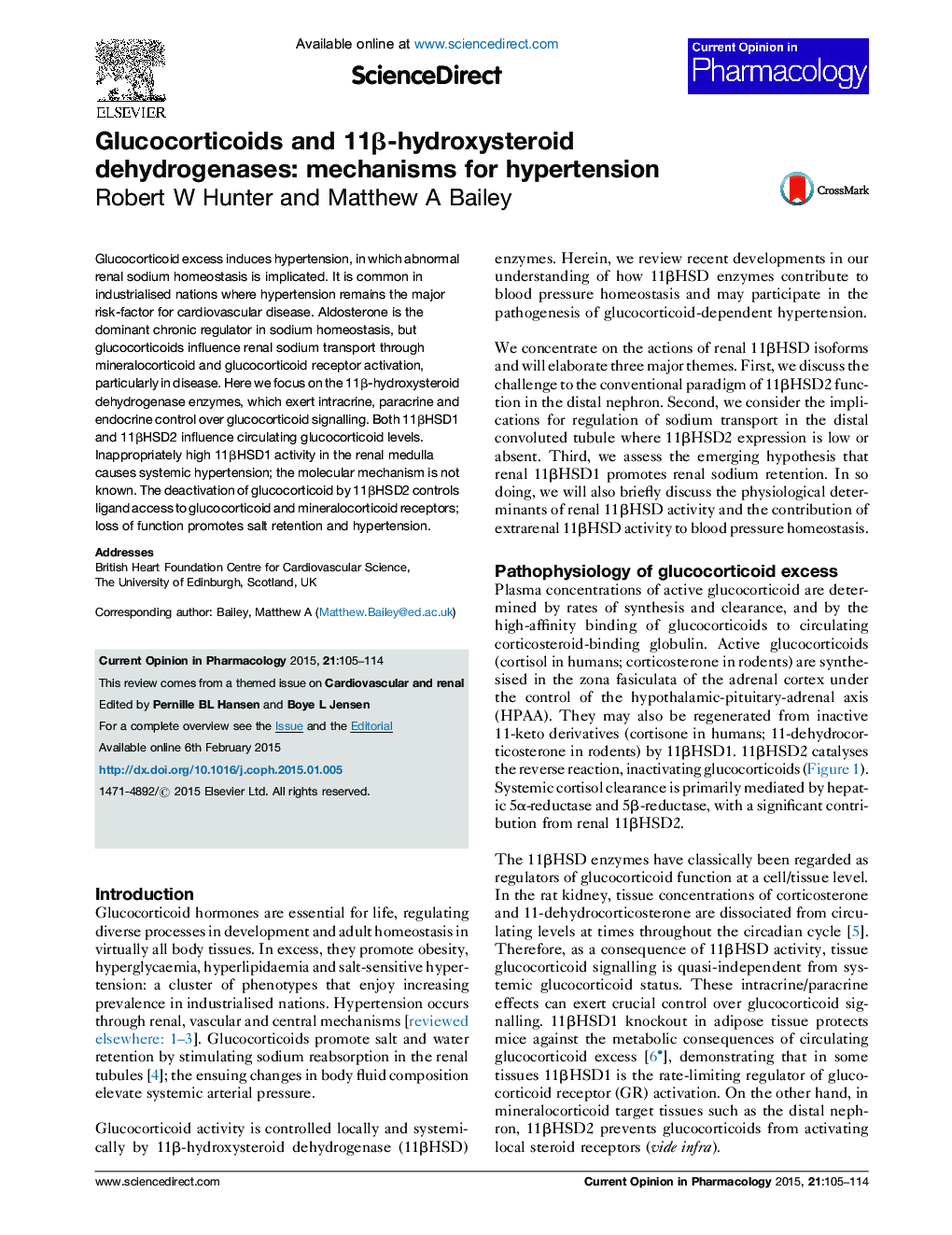| Article ID | Journal | Published Year | Pages | File Type |
|---|---|---|---|---|
| 5825954 | Current Opinion in Pharmacology | 2015 | 10 Pages |
â¢We review the role of renal 11β-hydroxysteroid dehydrogenase enzymes in blood pressure regulation.â¢Renal 11βHSD2 is not merely a 'guardian' of the mineralocorticoid receptor.â¢Steroid hormones stimulate sodium transport in the DCT, where 11βHSD2 expression is low.â¢Inappropriately high 11βHSD1 activity in the renal medulla causes hypertension.
Glucocorticoid excess induces hypertension, in which abnormal renal sodium homeostasis is implicated. It is common in industrialised nations where hypertension remains the major risk-factor for cardiovascular disease. Aldosterone is the dominant chronic regulator in sodium homeostasis, but glucocorticoids influence renal sodium transport through mineralocorticoid and glucocorticoid receptor activation, particularly in disease. Here we focus on the 11β-hydroxysteroid dehydrogenase enzymes, which exert intracrine, paracrine and endocrine control over glucocorticoid signalling. Both 11βHSD1 and 11βHSD2 influence circulating glucocorticoid levels. Inappropriately high 11βHSD1 activity in the renal medulla causes systemic hypertension; the molecular mechanism is not known. The deactivation of glucocorticoid by 11βHSD2 controls ligand access to glucocorticoid and mineralocorticoid receptors; loss of function promotes salt retention and hypertension.
